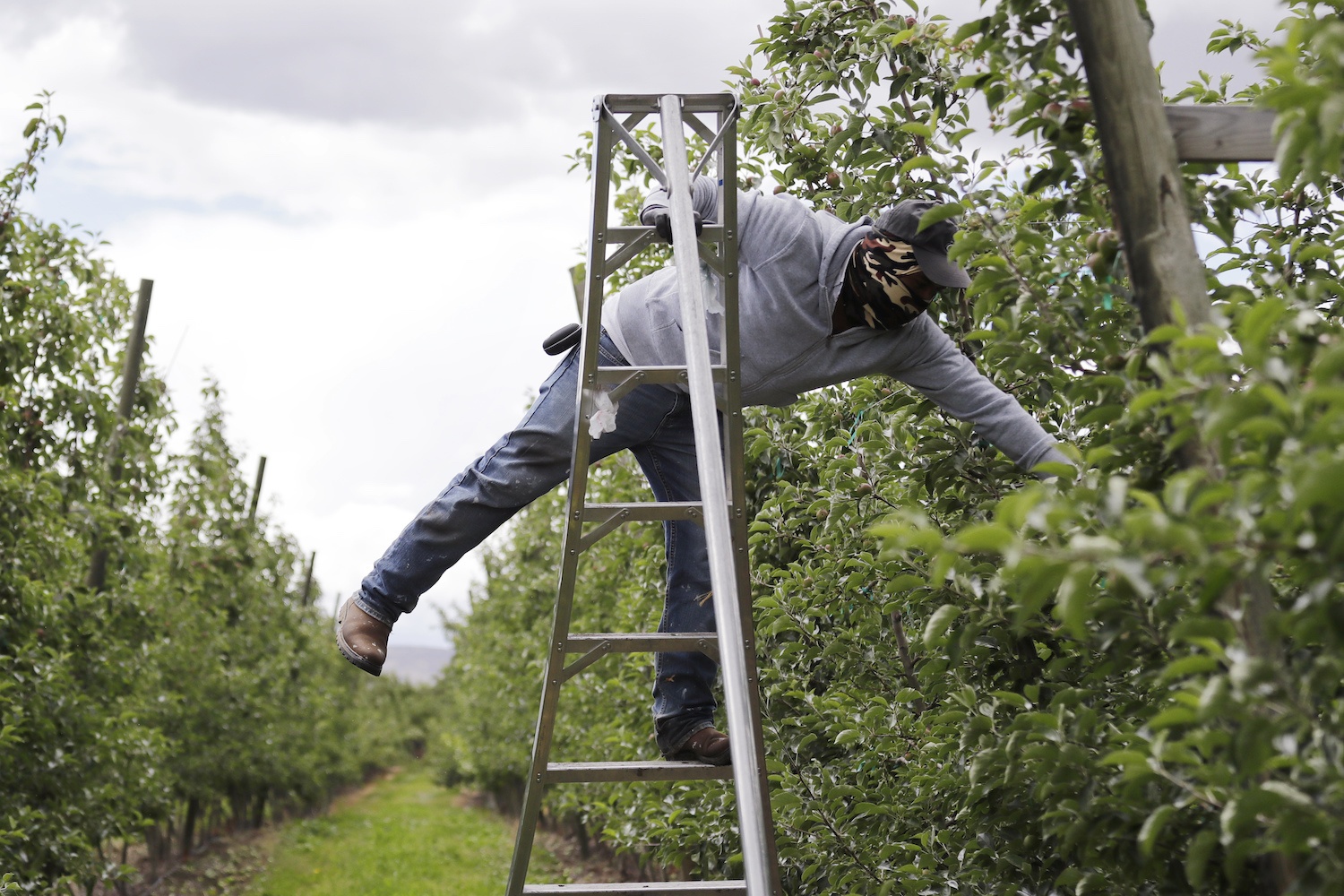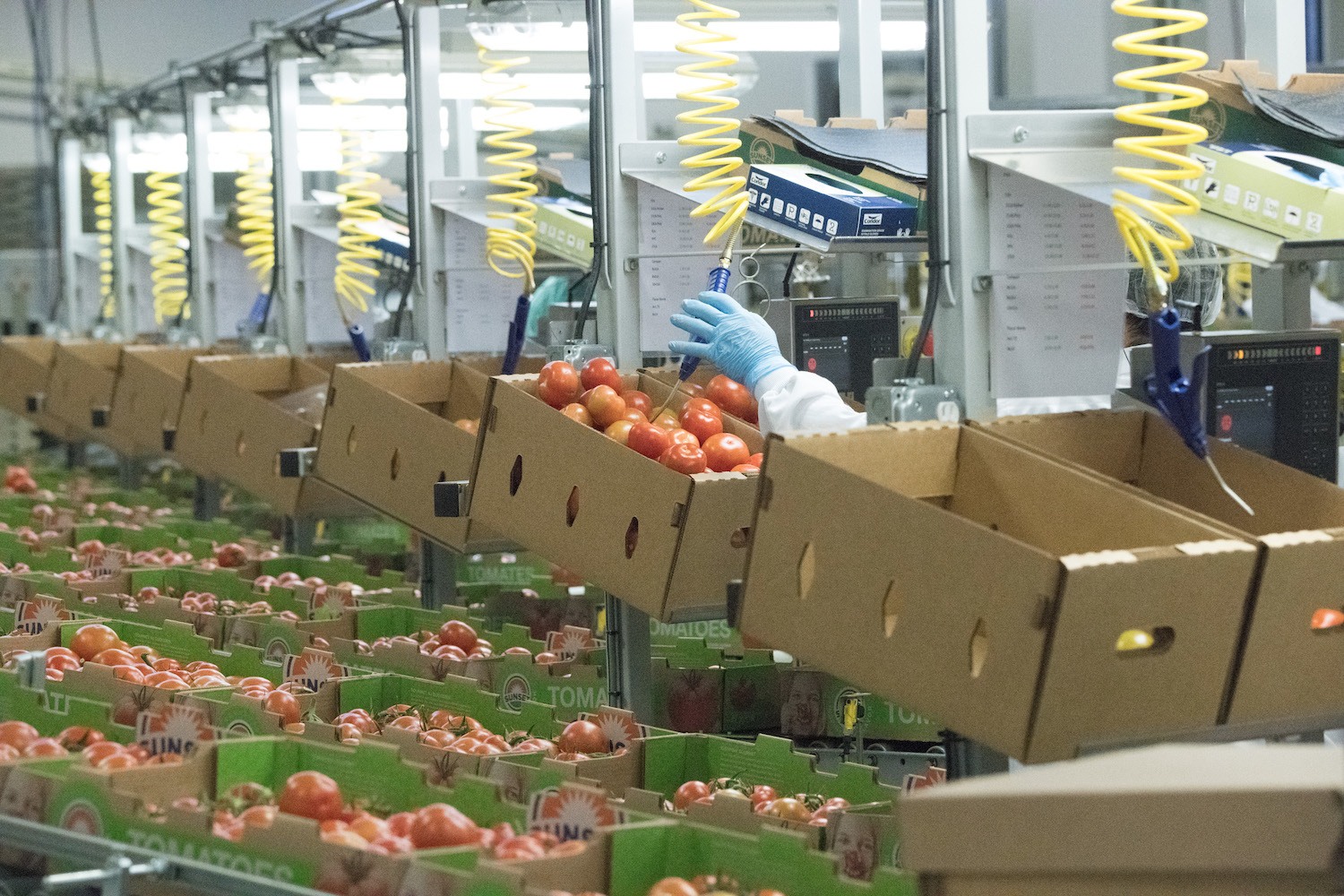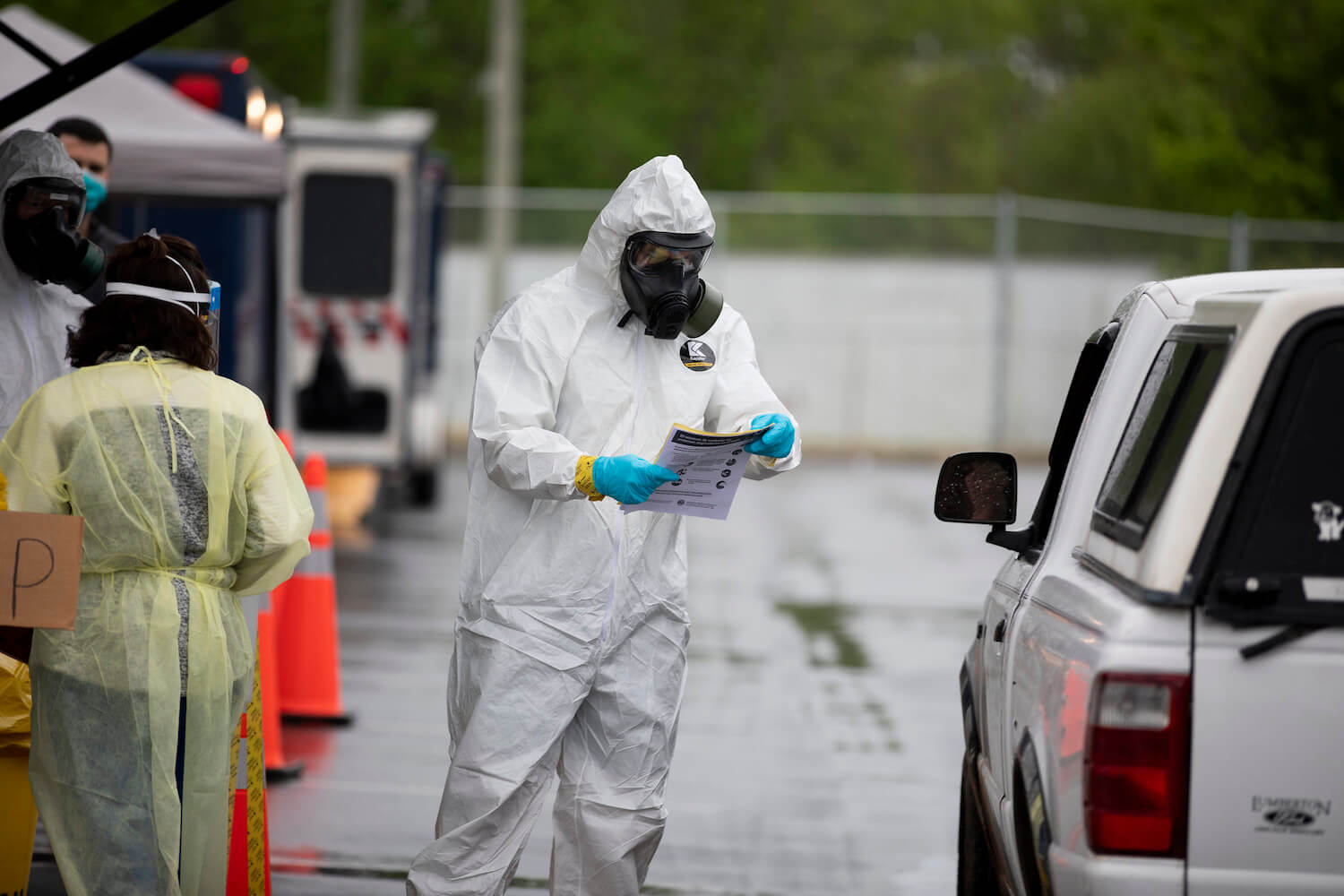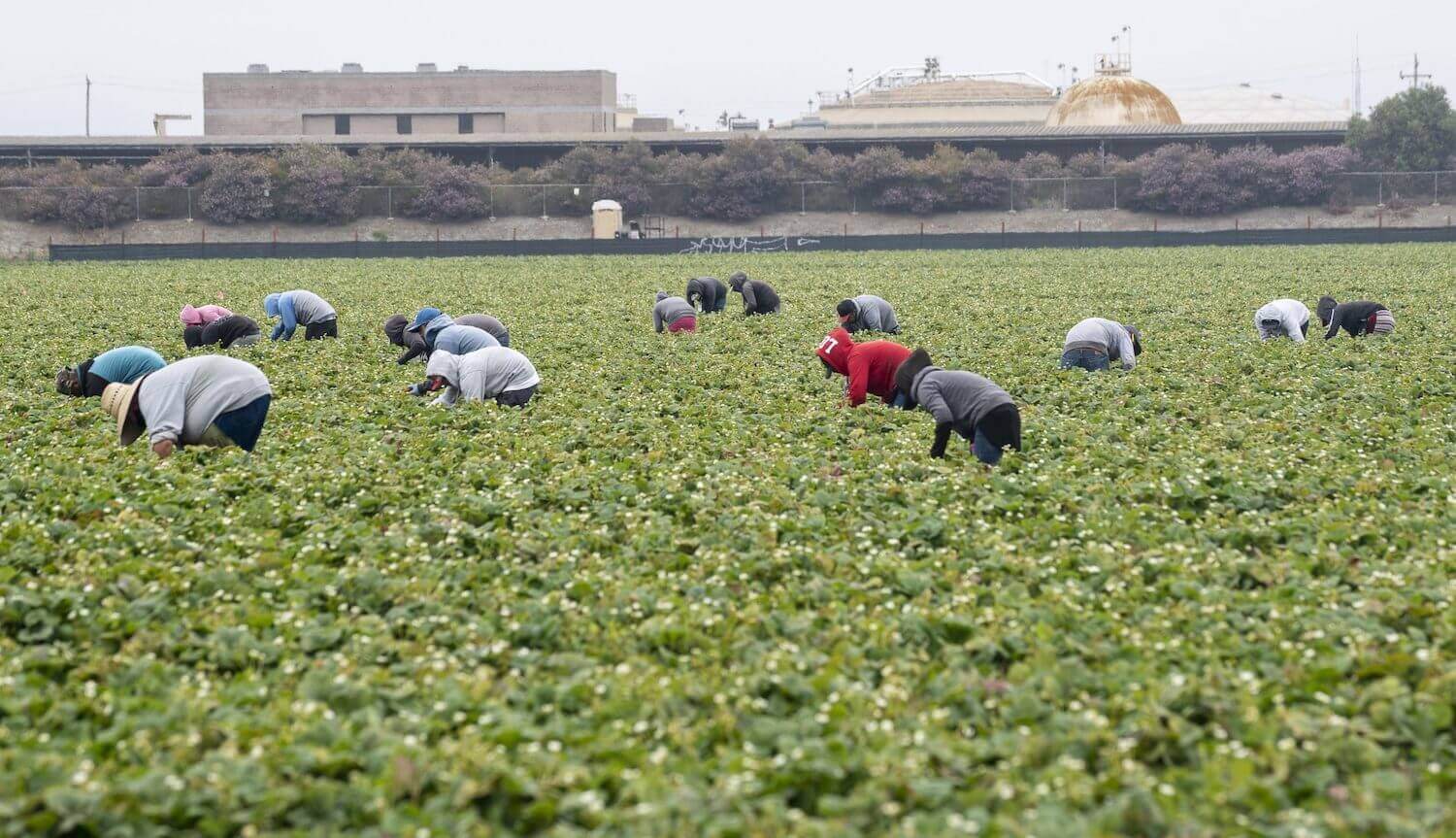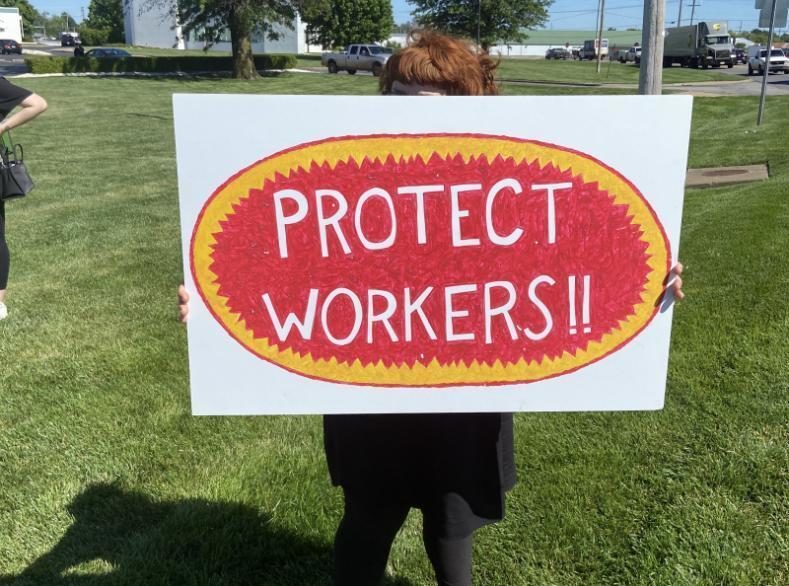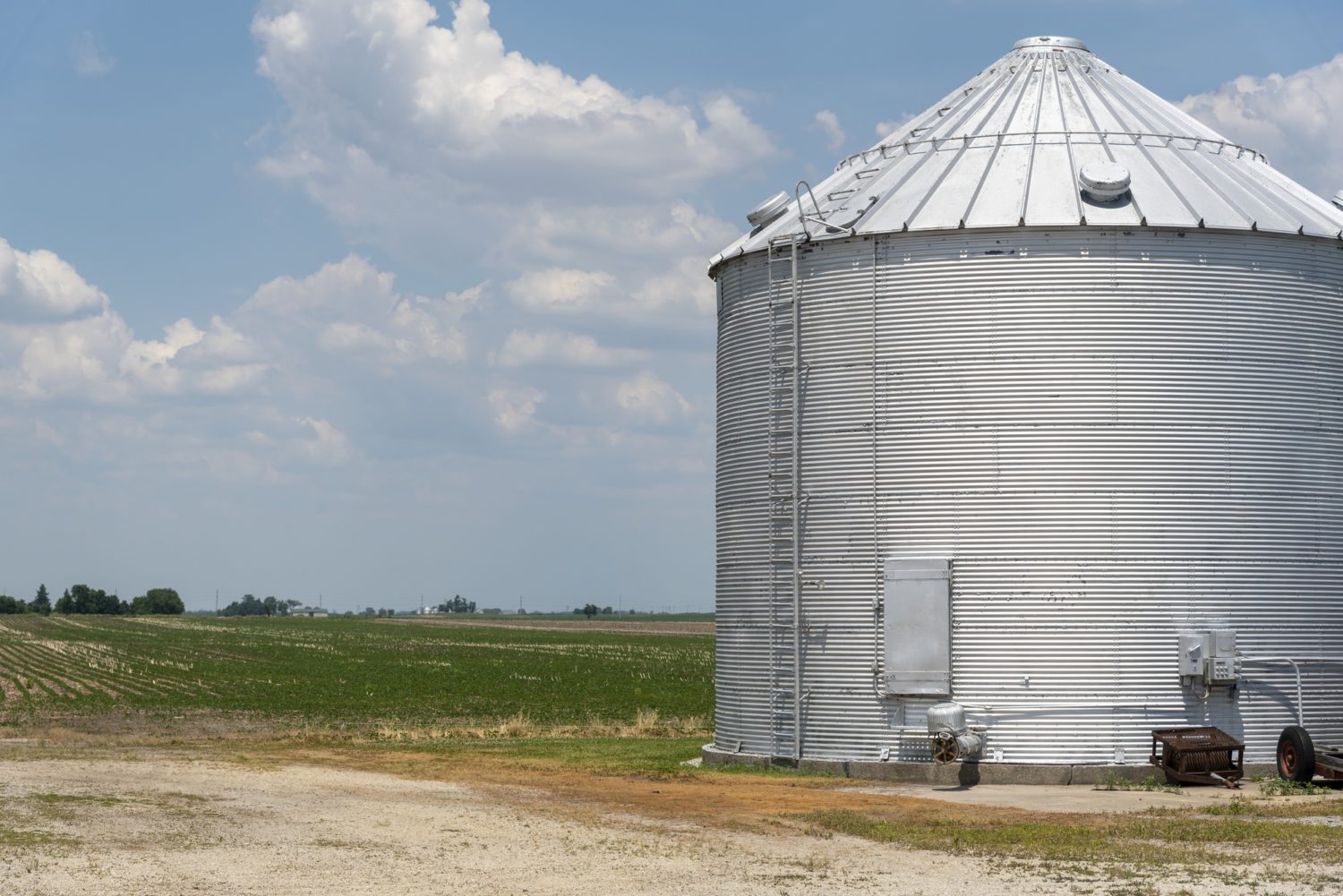Public health experts agree that agricultural operations urgently need widespread testing. But the logistics are complicated, the rules can feel onerous, and resistance has come from unlikely places.
In Washington State, fall typically heralds the arrival of a busy harvest, an imminent bounty of apples and cherries, pears and hops. This year, the season also brings something else: a raft of stricter protections for the state’s tens of thousands of agricultural workers, changes wrought by the Covid-19 pandemic.
Under an emergency proclamation signed in late August by Governor Jay Inslee, farms, orchards, and dairies must now test their entire workforce for Covid-19 whenever cases reach a certain threshold—more than nine cases, or a total infection rate of 10 percent, among workers within a 14-day period. The order also applies to other agricultural operations, including produce packing warehouses and entities that provide transportation and housing to temporary workers.
The mandate makes Washington the second state to require broad Covid-19 testing in food production. Last month, after a spate of outbreaks, Michigan ordered meat and egg processors, greenhouses, farms that hire migrant and seasonal workers, and farmworker housing operators to test all employees for the virus and commit to routine, preemptive testing in the future.
But while public health experts say more testing is essential to contain the growing number of outbreaks on farms, both Michigan and Washington have faced challenges on the ground.
The logistics are daunting. Questions about enforcement remain. At the same time, industry leaders—and even some workers—feel the states’ mandates were drafted without enough outside input. These critics say the test orders, although well-intentioned, are detached from the complicated realities of American agriculture.
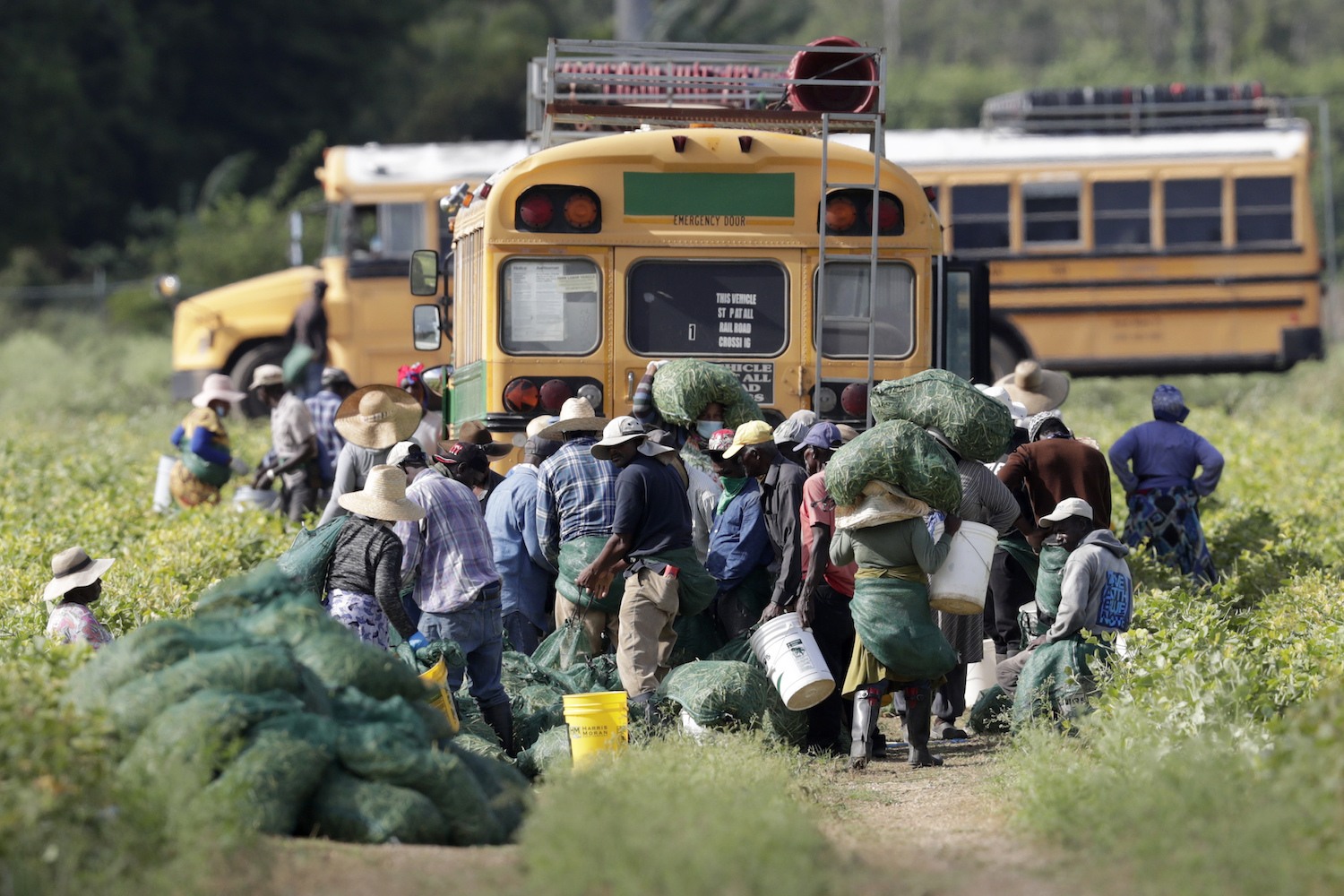
Farmworkers who work in close proximity in fields and packing houses, carpool to work, or live together in communal housing are uniquely at risk for Covid-19.
It’s no mystery why farms have turned out to be Covid-19 hotspots. In the fields, fruit and vegetable pickers work in close proximity, while sharing bathrooms and water fountains. Crews often carpool and live together in communal housing. For summer and fall harvests, many farms rely on migrant guestworkers, often in the United States on temporary H-2A visas, who are housed on-site in cramped trailers and dormitories. The California Institute for Rural Studies, a nonprofit research center, found that workers in Monterey County, one of the top agricultural counties in the U.S., were three times more likely to contract the virus than the general population.
Those conditions make agriculture an obvious candidate for widespread testing, as influxes of seasonal workers to crowded fields and food facilities can create serious public health risks. Every fall, Washington’s agricultural workforce swells to around 120,000, according to a state employment report. Mike Gempler, executive director of the Washington Growers League, anticipates around 50,000 people working the apple harvest this year, 10,000 of whom are new to the state. He’s “generally positive” about testing, and agrees it’s crucially important to stop outbreaks, along with isolating workers.
But the apple, pear, and berry farmers in his association question why agriculture is the only industry in Washington required to test workers, and fear being blamed for a public health crisis they say is not of their making. Some also worry the order could slow things down.
“We’re talking about peoples’ health here, and potentially getting sick, or getting their older or more vulnerable family members sick, and that’s extremely important and a really big deal.”
“If we can do quick tests, and we can do them pretty reasonably, I think it’s a great thing, to be able to keep the spread of the virus down,” said Gempler. “But I’m sure there are some people who are upset about the intrusion into the harvest, when everybody’s working full bore, and you don’t want to interrupt work.”
Tests can also be expensive. A Washington health department spokesman said the state will pay for the tests, which are considered non-diagnostic screens and not covered by health insurance. But the department could not confirm long-term costs, which worries Gempler, who said individual tests can cost between $50 and $200. He worries that the mandate’s “arbitrary threshold” could financially punish large growers, who aren’t used covering workers’ health-related expenses.
“We’re talking about peoples’ health here, and potentially getting sick, or getting their older or more vulnerable family members sick, and that’s extremely important and a really big deal,” he said. “But we have to think about money. And if we’re talking about $100,000, or something like that, that’s an enormous, unexpected expense.”
Yet as the virus rips through farmworker communities, widespread testing may be the only viable path forward. Other states have tried to implement a broad range of social distancing and hygienic measures on farms: Oregon, for instance, banned bunkbeds in worker housing, while California and Washington have extended federal emergency sick leave policies to cover more workers. Eight states require growers and farm operations to provide personal safety equipment, according to an analysis by the Environmental Working Group.
“Especially if people are living and spending a lot of time in close quarters, it’s really hard to design a system that will completely mitigate spread.”
But these measures aren’t always followed, and even screening for symptoms isn’t foolproof. An April study found that 44 percent of transmission is attributable to people who never have symptoms, or transmit prior to onset. The only way to control an outbreak is to know who’s infected and separate them, said Adam Scott Lauring, a University of Michigan infectious disease specialist.
“Especially if people are living and spending a lot of time in close quarters, it’s really hard to design a system that will completely mitigate spread,” Lauring said. “Symptom checks are good, but not a complete safeguard against the spread of disease.”
Given the circumstances, broad testing mandates like the ones in Michigan and Washington could be a more effective solution. But even these more ambitious efforts can fall short if they are not actively tracked and enforced. A spokesman for Washington’s health department conceded that, if an employer conceals positive cases from local health authorities, “we may not discover it right away.”
Despite evident public health benefits, advocates say that mandated testing can feel like a form of economic punishment to workers, who may not receive medical care or compensation if they receive a positive diagnosis.
Meanwhile, in Michigan, where the state has the authority to fine farms and businesses that are out of compliance, daily oversight of testing is minimal. Farms and migrant camp operators are only required to have test plans available upon request, and maintain complete test records. A health department spokesman could not say how many workers had thus far been tested, or even how many worksites and employees were covered by the order.
The state only offered data from companies who had applied for state safety grants to cover costs or requested assistance in setting up on-site tests. As of August 27, 255 employers and housing operators had requested nearly 15,000 on-site tests; over 5,600 tests had been completed, and nearly 5,400 had been scheduled. In a “snapshot” of those tests, 180 out of 2,053 tests came back positive, or just under 9 percent of workers.
Industry resistance to broad-scale testing is perhaps predictable. But even some farmworkers—the population these measures are intended to protect—have resisted the new policies.
Despite evident public health benefits, advocates say that mandated testing can feel like a form of economic punishment to workers, who may not receive medical care or compensation if they receive a positive diagnosis. Though federal legislation passed this spring issued emergency sick leave benefits to millions of people, it exempts businesses with fewer than 50 employees and over 500. That disqualifies just under two-thirds of all farmworkers, according to an Economic Policy Insitute analysis.
“People right now do not want to get tested, because they fear losing their jobs.”
Even on farms where workers are legally entitled to that pay, a test diagnosis can be a “scarlet letter,” said Reyna Lopez of Pineros y Campesinos Unidos del Noroeste (PCUN), an Oregon worker center that helps file wage theft claims with state authorities. She says some workers who test positive have been shunned by their communities and labor contractors, and fired from jobs at processing plants and fish canneries.
“People right now do not want to get tested, because they fear losing their jobs,” Lopez said. “And any kind of indication that it could happen is a risk to their livelihood, and a risk to them being able to provide for their family, which is the most important thing in their lives.”
Like their employers, some workers also fear that a diagnosis means missing out on the fall harvest, which can be the most lucrative time of the year. Last month, a group of seasonal farmworkers in Michigan sued state officials in federal court to stop them from implementing the emergency testing order. In the complaint, the workers claimed a positive diagnosis would prevent them from working the blueberry and apple harvests, and force them to lose a “substantial amount” of their annual income.
“In our country, the employer is responsible for maintaining a workplace that is free from known health risks.”
Shelly Hartmann, a Michigan blueberry farmer that joined the lawsuit, claimed her company’s hundreds of seasonal and migrant workers would rather quit and take jobs in landscaping or construction than submit to a test, which would be “catastrophic” for her business. The suit, which was organized by the Michigan Farm Bureau, claimed the emergency order discriminated against the state’s predominantly Latino farm workforce; it was rejected by a federal appellate court last week.
During the eight-week apple harvest, pickers work six days a week, “from sunup to sundown,” said Jamie Kober, an enhancement director at Riveridge Produce, an apple company in Sparta, Michigan. He says H-2A guestworkers out for two weeks on emergency sick leave can’t replace those earnings, because their benefits are capped at 80 hours, and because they would earn the prevailing wage of $14.40 an hour, rather than the $20 or $30 they could earn by the bin.
Kober says the company applied for state assistance, and the health department arranged for Cherry Health, a Grand Rapids clinic, to begin testing the company’s 450 apple pickers, packers and cider processors last week. So far, none of the workers have tested positive. After the harvest, when the company’s workforce shrinks dramatically, the clinic will continue to test Riveridge workers as required, he said.
Despite the complications, and the uncertainty of long-term costs, health experts agree that mandates will be key to stop the spread of the virus in vulnerable communities. Marissa Baker, an assistant professor of occupational health at the University of Washington, has concerns about farm employers using test results to get rid of sick workers. But ultimately, she said, because federal law is clear that it is an employer’s responsibility to maintain a safe workplace, it’s entirely appropriate to require farms and processors to stop the spread of the virus in their orchards and camps.
“I don’t see this as being any different from any other health and safety control in a workplace,” Baker said. “In our country, the employer is responsible for maintaining a workplace that is free from known health risks.”
